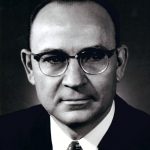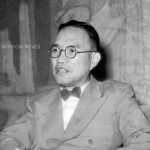The year was 1946. The Ford Motor Company had not turned a profit in fifteen years and was losing money at the rate of one million dollars per day. Henry Ford II, not yet thirty years of age, was now firmly at the helm of Ford Motor Company and he needed help. “I am green,” he said, “and searching for answers.” The answer came in the form of a telegram from 32-year old Charles B. “Tex” Thornton, an ambitious and charismatic colonel of the Army Air Force. The telegram read: “Dear Mr. Ford. I represent a group of associates who have served under me at the office of statistical control, Army Air Force. We would like to discuss with you personally a matter of management importance and request an early meeting.” It was an all or nothing proposal. Either the young Mr. Ford hire all ten members of the group, or he would get none. A day after the telegram was sent, the group was invited to Dearborn. In addition to Thornton, the group included Wilbur Andreson, Charles Bosworth, Robert McNamara, J. Edward Lundy, Ben Mills, George Moore, Jack Reith, James Wright and Arjay Miller. This group of ten, soon to be known as “The Whiz Kids,” ultimately would provide Ford Motor Company with two presidents and six vice presidents. Not only did they aid the Ford Motor Company, they became one of the most celebrated success stories in all of American business. The son of a Nebraska farmer, Arjay Miller’s unique name came from combining his father’s first and middle initials, R and J, for Rawley John. After graduating from UCLA in 1937 with highest honors, Miller spent three years at the University of California Berkeley as a graduate student and teaching fellow. He briefly served as an economist with the Federal Reserve Bank of San Francisco before joining the Army Air Force during World War II. Drafted as a Private and rising to Captain, it was here that Miller came to know Colonel Tex Thornton. His group was charged with keeping track of the logistics of air operations, from pilots and airplanes to bombs and training, all without the help of a computer. As the war wound down, he and a group of 10 officers under the leadership of Thornton decided to go as a group to some company that needed managerial help. Miller wasn’t very interested when the group was looking at the Illinois Central Railroad, but when its focus shifted to Ford, he gave up his plans to return to banking and a Ph.D. in San Francisco and went along. The rest is history. The ten so-called “Whiz Kids” aided in turning the company around and built it into one of the most successful and profitable companies in the post-War period. Miller climbed the corporate ladder to become president of Ford in 1963. He served on the Ford Board of Directors from 1962 until 1969, when he left to become Dean of the Stanford Business School. There, he established the Public Management Program that has trained thousands of public sector managers and also educated private sector leaders about public needs. He served as Dean for ten years. Under his guidance, the business school appointed its first women and ethnic minority faculty members and increased its endowment from $6 million to $24 million.

Arjay Miller
Inducted 2006
read more
Learn More
- Dean Arjay Miller Stanford Graduate School of Business

